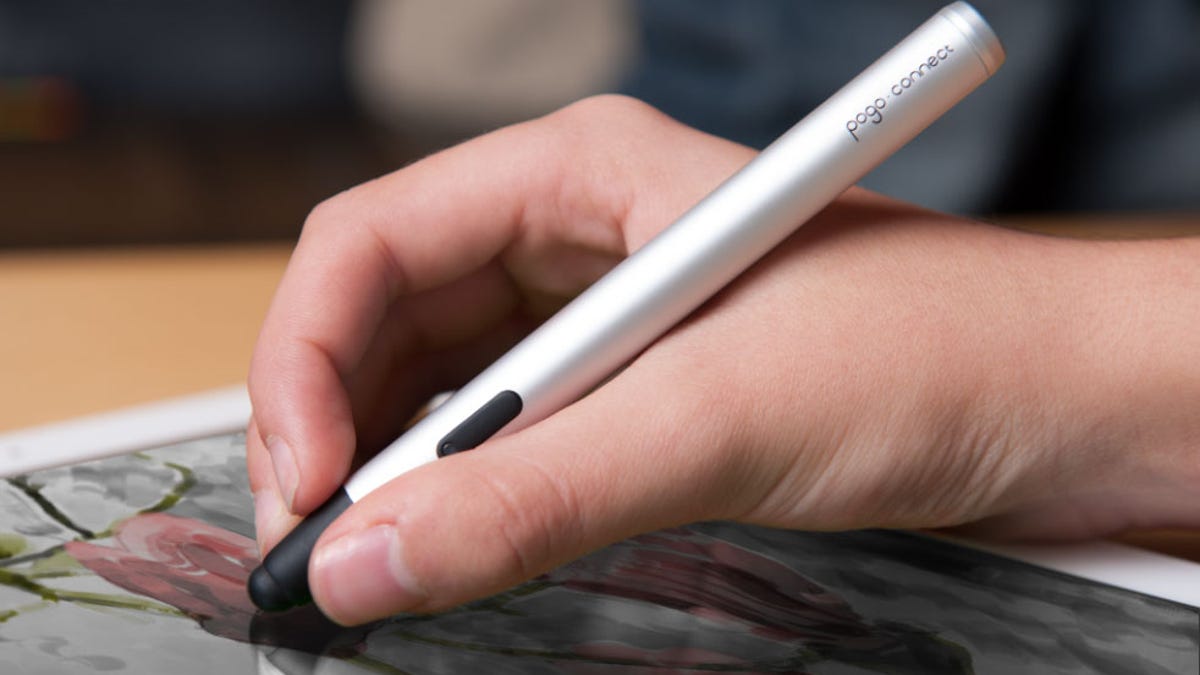New Pogo Connect stylus feels the pressure
With the Pogo connect, iPad artists get a new pressure sensitivity option to better match real-world pens and brushes.

For years Wacom has ruled the digital stylus market for artists, photo retouchers, and others who want to marry the worlds of pens and computers. But touch-screen tablets are rewriting the rules for digital input, and Ten One Design hopes its new Pogo Connect stylus will prosper as a result.
The company already sells the more ordinary Pogo and Pogo Sketch tablet stylus products, which are held like a pen but which a tablet or smartphone sees as a finger. The new $80 Pogo Connect, though, adds a higher-end feature from the Wacom world: pressure sensitivity.
That means the harder you press down with the tip of the stylus, the darker or wider the line your brush stroke will appear -- at least when using compatible software that knows how to interpret the extra information the pen sends over Bluetooth 4.0. In contrast, Wacom's approach doesn't require a battery, but it does need a special screen to monitor the stylus.
To power the radio transmission (and a programmable LED on the stylus, too), the Pogo Connect uses a single AAA battery that should last for months, Ten One said.
Compatible software available now includes Brushes, Zen Brush, PDFpen for iPad, Procreate, FlipBook HD, and Sketch Club, Ten One said. Apps under development and "coming soon" include GoodNotes, Noteshelf, Colors, Paper, SketchBook Pro, and NotePad Pro.
For programmers who want to get on board, Ten One offers a software developer free kit (SDK). Programs that aren't compatible just treat the stylus like an ordinary stylus.
The company is very keen on the artistic options enabled by the stylus:
By capturing the nuances of any drawing, novice and professional artists alike can easily create detailed, multifaceted digital paintings in a matter of minutes. By applying more or less pressure, users can control line width and opacity of a drawn line. Plus, its palm rejection feature keeps drawings clear of unnecessary and unwanted marks, smudges, blots and more from hands resting on the screen during drawing sessions.
In my experience with touch-screen stylus products, though, there's a major drawback compared to drawing with a real pen or pencil, which of course leaves its trace immediately. There's often a lag between the stylus stroke and the result appearing on the screen as the tablet processes the input signals. It's distracting, though it's still better than finger painting without a stylus if you're interested in sketching, doodling, painting, or handwriting on your tablet.
People can pre-order the stylus starting October 1.

